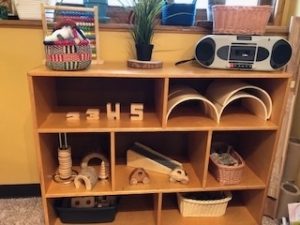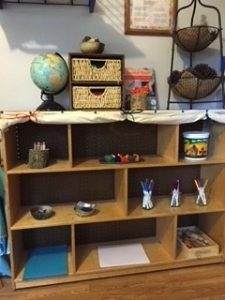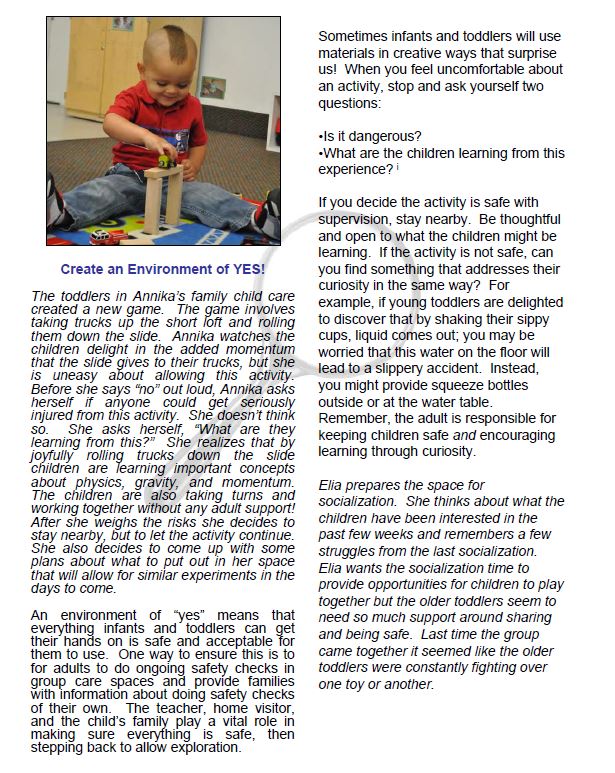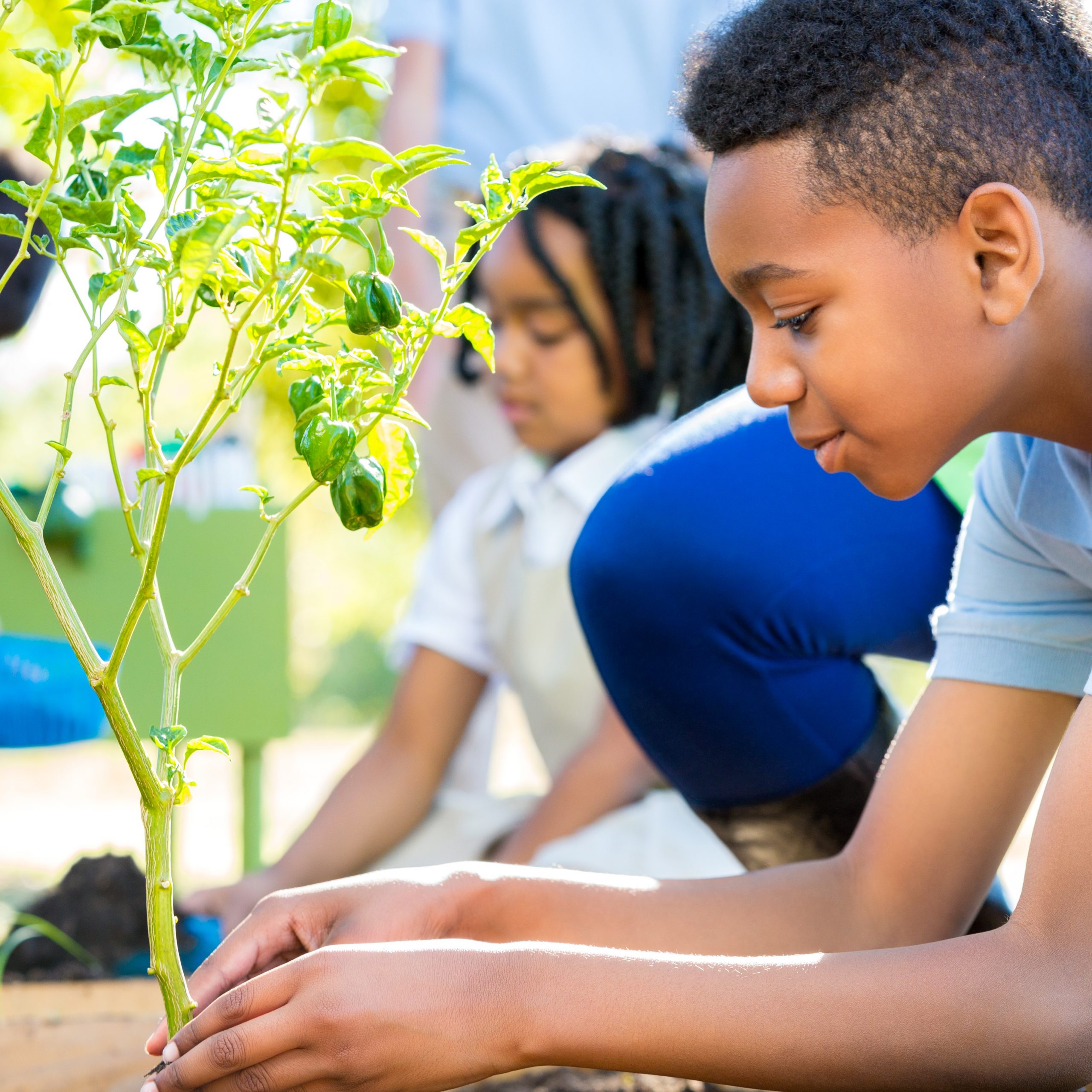Sometimes, if we take a moment to pause and look around (yes, it is hard to do!)…we can really see what is around us. We may realize that many of the answers to questions we ask are already there for us, just waiting to be discovered.
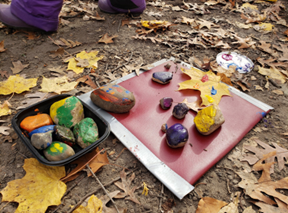 As early childhood educators and professionals, this pause may be through the process of asking a question in a new way, looking for a different outcome, truly seeing with new understanding. Or it may be a stepping stone for something we already know, but takes us into an unexplored direction.
As early childhood educators and professionals, this pause may be through the process of asking a question in a new way, looking for a different outcome, truly seeing with new understanding. Or it may be a stepping stone for something we already know, but takes us into an unexplored direction.
The journey of outdoor learning is like that.
For those that are already on this path, you know. For those curious and wanting to learn more, I invite you to read on.
Every outdoor environment has something to offer. Something to discover. Something new that can enrich our lives. It can transform the way in which children interact with the world. Our world. Their world.
The research is abundant and clear regarding the many benefits of children’s outdoor learning and nature play.
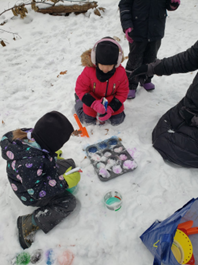 So, whether you have extensive or minimal outdoor time at your center, whether you have a forested area, a field, an open lot, or a small space or even just a few trees in which to explore, nature learning CAN happen. But, I stress that it be explored with that curious mindset. If you are thinking of all of the barriers that may stop you from implementing outdoor experiences for your children, you are not alone. But this is so new, so different! I have so much built into what I already know and do! This is too much work! Change IS hard, but as you read on for practical tools and ideas to integrate more nature into your day, you will find it is not only doable, but full of unexpected gifts. Getting Started Teaching Outside from Get toGreen through Fairfax County schools provides straightforward tips.
So, whether you have extensive or minimal outdoor time at your center, whether you have a forested area, a field, an open lot, or a small space or even just a few trees in which to explore, nature learning CAN happen. But, I stress that it be explored with that curious mindset. If you are thinking of all of the barriers that may stop you from implementing outdoor experiences for your children, you are not alone. But this is so new, so different! I have so much built into what I already know and do! This is too much work! Change IS hard, but as you read on for practical tools and ideas to integrate more nature into your day, you will find it is not only doable, but full of unexpected gifts. Getting Started Teaching Outside from Get toGreen through Fairfax County schools provides straightforward tips.
The North American Association for Environmental Education (naaee) offers three categories to plan for and organize outdoor learning experiences; TEACHING, SAFETY and the ENVIRONMENT.
When we are spending time outside with children, we can learn from both the space and the place. Learning outdoors (simply being outside!) is also a stand-alone benefit to whole-child development…simply being outside is good for children and schools.
- What do I teach?Natural Start: The Teaching and Tinkergarten: Tinkergarten outdoor learning ideas
- It seems so risky! Natural Start: The Safety
- Where? Natural Start: The Environment
Practical tips for clothing and snack time:
Sometimes starting small is best. A new nature walk routine with prompts such as “Tell me more about what you notice” and “Can you say more about that?” Or integrating a math focus such as “Nature explorers, today we are going to notice the nature around us in groups of three” may be one of the most important changes you make this year.
Sometimes re-thinking a routine typically done indoors and/or on a screen and bringing it outside, is best. Read-alouds, journaling, and songs may now take place on foam sit-upons or a tarp. Some extra minutes teaching and practicing outdoor learning routines are well worth the time.
Sometimes planning with your teaching team and doing your own adult nature-scavenger hunts, and surveying the areas for safe and creative play, is what is best.
Nature is joyful. Nature is powerful. Nature is an incredible teacher. I invite you to take the small steps or giant leaps needed in order to provide critically important outdoor experiences for our children. Working as a teacher and coach in countless spaces and places for over twenty years, I can truly say that what nature as a teacher gifts to us, is incomparable.
So, slow down, look around, and ask those questions that nature has been waiting for us to ask.
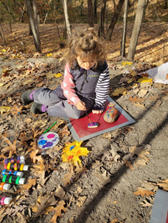 “If we truly want to make nature-based education meaningful and accessible for all children and families, we must strive to approach education in the context of not just the class, or the forest, but the place, this entire remarkable world of which we are all a part.” – Kit Harrington
“If we truly want to make nature-based education meaningful and accessible for all children and families, we must strive to approach education in the context of not just the class, or the forest, but the place, this entire remarkable world of which we are all a part.” – Kit Harrington
Within the Reggio Emilia approach, and now in many early childhood programs, the environment where children spend their time is typically called the third teacher. The environment helps determines the flow of the day, what children learn and how they interact with one another. Having the right amount, variety, and types of materials in an early childhood classroom will make the day run more smoothly and will be more engaging for the children, thus in turn will make it easier for the teacher.
Knowing the why, when, and how to rotate toys is important and a worthwhile task, based upon information gathered through child observations. Through observations of the children in care, we can determine if, when, and what types of materials need to be rotated in the environment. The provider knows the children in their care very well and soon can see patterns emerge that will help the provider make specific adjustments in the environment.
Let’s consider some of the reasons why we rotate toys in a childcare environment.
A child may have mastered a certain skill and by changing specific materials in the classroom we can help scaffold the child to the next skill level. Children learn through facing appropriate challenges, but it’s important to make the challenge achievable. We don’t want the child to feel frustrated or lose interest. A skilled teacher is able to observe students and notice these small changes and find materials that will spark curiosity and interest. We may want to teach a new skill. Placing new toys and materials in the classroom can help a child learn a new skill, such as sequencing, stacking, or balancing. We may also want to challenge that skill and make it slightly more difficult by adding something new to use. Safety is top priority so make sure that items placed in the environment are safe for all ages of the children in the classroom. This can be challenging in multi age programs but can be overcome with a little planning and thought. A child’s individual interests will also play a part in the items we choose. We know that children will play with things that interest them. Having materials of interest will mean the children will explore and play with things that interest them and that are relatable and familiar to them. Common household items that children are familiar with are good to add when possible.
Now let’s take a look at when we might remove certain materials from the classroom environment. When children have lost interest, aren’t playing with as intended or are mistreating the materials, this is a good time to remove them and find materials that the children are interested in. Intended uses of toys and materials may vary from item to item. I believe that a toy does not necessarily have to be used exclusively for its intended purpose. I believe children should be able to use their imagination and creativity and use items in different ways, not just the way intended from the manufacturer. Items that are distracting and stress inducing should be removed. Some children are more sensitive to certain colors, sounds, and even how much is available in the environment for the children at one time. Remember less is more.
Finally, how we display items in the environment helps convey to the children what is expected of them and where items belong. Neatly placing items on a shelf helps children put things away on their own. Labeling shelves and baskets make clean up a breeze. They can also see and reach what they would like to play with, and this allows for independence. Placing similar items together on the shelf in an aesthetically pleasing way, where children can see them shows we care about our materials and toys, and they deserve a place in the space. Don’t over crowd the environment. Less really is more in childcare. If too many choices are available to children, they don’t play well with any of them. Choose items that interest the children and things they are familiar with and see in their day to day lives. We want these items to be relatable to children and familiar. Children want to use “real” things they see in their everyday lives. If teaching a theme, we may want to choose items that relate to the theme being taught or based upon the current season. Rotating 1-2 things a week and making adjustments as needed is less stressful on children than changing everything at one time.
Creating an organized and inviting environment is not difficult. With a little planning and time, you can create a relaxing and organized childcare space to enjoy for children and teachers alike.
- Personally acknowledge and greet each family and child, with a smile as they enter the room.
Doing this simple task helps build meaningful and respectful relationships with families. It’s the first interaction the family may have each day and will go a long way in helping families feel welcome. Calling the parent by their name (unless otherwise specified by the parent) and their child by their own name, makes it personal. We want parents to know we are happy to see them and their child and greeting them by their first name is much nicer and more personal than just saying “hello”. If you are unsure how to pronounce their name, it’s best to politely mention you are unsure and ask them how to say it and repeat it back.
- Have daily and ongoing conversations with families.
Each day talk to the family and share something their child did that was positive. Either a new skill learned, or an interaction with another child you observed that was especially nice are examples. Try to be engaging, smile and actively listen. Daily conversations build trust and allows for other conversations to evolve over time, allowing you to learn about the family and their child. When trust is built, families are more comfortable sharing information that may be helpful in meeting the child’s needs and in some cases the family’s needs as well.
- Make sure all families and all children are represented.
Displays around the classroom should represent all children. They should depict varying abilities, languages, and cultures. This need to be done in a non-stereotypical way. The environment should include a combination of pictures, books, dolls, music, and household items that are familiar to children and things they would find in their own home and community. Ask families to bring in family photos of all family members, doing activities they enjoy as a family. Display and make classroom books with them. Displays should be at both child height and parents’ height. Offering seating for adults to sit shows families that they are welcome to stay awhile, and you care about their comfort.
- Provide ways for families to volunteer.
When families can participate one way or another in the childcare program, they feel invested and included. Childcare programs have many different task to manage throughout the year, why not get the help of the families. Parents usually are very happy to lend a hand or offer skills or services they may have. It’s also fun to get the whole family involved. Some ways parents can volunteer might be, a spring or fall clean up on the playground, repairing equipment, sewing things for the classroom, reading a book to the children, or doing a cooking activity with a small group of children. Remember that not all families will be able nor want to volunteer in the classroom and we want to be respectful of this. Providing a list of things, parents can work on at home will allow these families to also feel valued and connected too. Remember part of feeling welcome is knowing you are valued no matter how or if you choose to participate.
- Provide resources and support for families.
Create a specific area in the childcare program where parents can go to get resources pertinent to child development, parenting, health and safety, product recall information and child nutrition as well as social service supports and free events available in your area. Providing resources that pertain to parenting and child development will let parents know that you care about their family outside the walls of the childcare. The location should stay consistent so parents will know where to find these resources and can visit without the help of staff. Providing a small lending library if you’re able, may be useful too. Keep this area uncluttered and organized so parents will want to visit and can find what they are looking for. Remove outdated information in a timely manner.
Early Childhood Education can have a lot of buzzwords and misunderstandings. This “Philosophy Spotlight” series intends to introduce you to the origins of a number of currently used philosophies directly from the writings of their founders and accomplished practitioners, as well as modern practices and ideas associated with these philosophies. Note that many of the philosophies and philosophers we reference in the US are Euro-centric in origin. I will do my best to integrate philosophies of development and learning from a more diverse body of knowledge, for the benefit of all children and providers. You’ll notice a significant amount of overlap between philosophies, as well as some stark differences. Use these articles to consider your own approach to early education, and maybe refine how you see you work and design your program. These are intended to be broad overviews; please see the references if you’d like to learn more about each one!
Origins: After Italy had been destroyed as a fascist power during World War II, there was a movement to rebuild the country in a way that would support its citizens in pursuit of freedom from oppression. The first Reggio Emilia school was built by families seeking to create a new school for their children as they rebuilt their community. They quickly grew into a network of preschools and infant toddler centers through the 1960s and 70s. In 1991, Newsweek called the Diana school, one of Reggio Emilia’s preschools, one of the best schools in the world.
Modern Regulating Bodies/Standards: The term “Reggio Emilia Approach” is trademarked, leading to many programs describing their philosophy as “Reggio Inspired”, although there is no regulating body outside of Italy that controls the use of the term. A school cannot be certified as a Reggio Emilia school, nor can a teacher be a certified Reggio Emilia teacher. There are organizations in the International Network that further the spread of information about the Reggio Emilia approach, but do not serve as regulators.
Theories and Theorists:
Loris Malaguzzi is considered the founder of the Reggio Emilia approach. He was a psychologist trained in pedagogy and had previously co-founded a school for children with disabilities and learning difficulties. While working there, he was approached to collaborate with the new network of preschools and infant-toddler centers.
Values:
Children are active protagonists in their growing processes: Every child can and has the right to create their own experiences as an individual and member of a larger group.
Progettazione/Designing: Education is shaped by the design of environments, participation, and the design of learning situations. It does not happen to the same degree in predesigned programs or curricula that are premade.
The hundred languages: The Hundred Languages of Children are a metaphor for the potential of children and their thinking and creative processes. It is a central value to honor all of children’s forms of self-expression equally.
No way. The hundred is there: A Poem by Loris Malaguzzi (translated by Lella Gandini)
No way. The hundred is there.
The child
is made of one hundred.
The child has
a hundred languages
a hundred hands
a hundred thoughts
a hundred ways of thinking
of playing, of speaking.A hundred always a hundred
ways of listening
of marveling, of loving
a hundred joys
for singing and understanding
a hundred worlds
to discover
a hundred worlds
to invent
a hundred worlds
to dream.The child has
a hundred languages
(and a hundred hundred hundred more)
but they steal ninety-nine.
The school and the culture
separate the head from the body.
They tell the child:
to think without hands
to do without head
to listen and not to speak
to understand without joy
to love and to marvel
only at Easter and at Christmas.They tell the child:
to discover the world already there
and of the hundred
they steal ninety-nine.They tell the child:
that work and play
reality and fantasy
science and imagination
sky and earth
reason and dream
are things
that do not belong together.And thus they tell the child
that the hundred is not there.
The child says:
No way. The hundred is there.
Participation: Children are welcomed to participate in relationships, in the classroom and community. This is to give children the “feeling of solidarity, responsibility, and inclusion, and produce changes and new cultures” (Reggio Children).
Learning as a process of construction, subjective and in groups: Every child constructs their own knowledge, through conversation, research, and discussion.
Educational research: Adults interacting with children should see themselves as researchers and use their documentation as research into children, groups of children, and learning. Educators should be encouraged to continue constructing and reconstructing their knowledge and practices.
Educational documentation: Adults and children take videos, photos, and work samples to document the learning the children are engaging in. These documents are used to provoke discussion and through between educators, between children, and between educators and children together.
Organization: Time, space, and work are all organized to reflect the values of the school and projects.
Environment and spaces: Interior and exterior spaces are all designed and organized to interact with the people in the space, shape learning experiences, and inspire thought and creativity. Care of the environment is critical, and maintaining the aesthetics of the space is intended to create pleasure and joy in the people who use the space.
Formation/Professional growth: Professional growth is the right of individual educators and the whole group. In Reggio Emilia, professional development is part of educators’ working time, and occurs within staff meetings and the larger city, national, and international context.
Evaluation: The schools should be evaluated frequently by their coordinators, educators, community members, and families to ensure that they are meeting the needs of the children and families.
What You Might Observe in a Reggio Inspired Program:
Many Reggio Emilia inspired programs place a heavy emphasis on the arts, particularly visual representations and planning, along with guided exploration of visual arts materials. There will likely be documentation of children’s work hanging up for children and adults. Oftentimes, children in Reggio Inspired programs use more “loose parts” than traditional toys. As part of the Reggio value of designing, children are offered “provocations” which are curated sets of materials designed for children to explore and experiment with to provoke their thinking and extend their interests. Provocations can look like a tray with small balls and ramps; unwrapped crayons, leaves, and thin paper for printmaking; boxes, tape, and crayons to create with; or anything else that children might use to carry out experiments on their own interests.
Influence on Modern ECE Programs at Large:
Many programs use pedagogical documentation to show families what children have been participating in. Loose parts play is also becoming much more widespread in early childhood programs.
Questions for Your Reflection:
When you think of yourself as not just an educator, but a researcher of children, how does that influence your perspective on your work? What would you do differently as a researcher than as a teacher?
How does documentation differ from any other display of children’s work?
When you think about your environment, does it work with or against your program’s mission and vision? What would you like to change?
Early Childhood Education can have a lot of buzzwords and misunderstandings. This “Philosophy Spotlight” series intends to introduce you to the origins of a number of currently used philosophies directly from the writings of their founders and accomplished practitioners, as well as modern practices and ideas associated with these philosophies. Note that many of the philosophies and philosophers we reference in the US are Euro-centric in origin. I will do my best to integrate philosophies of development and learning from a more diverse body of knowledge, for the benefit of all children and providers. You’ll notice a significant amount of overlap between philosophies, as well as some stark differences. Use these articles to consider your own approach to early education, and maybe refine how you see you work and design your program. These are intended to be broad overviews; please see the references if you’d like to learn more about each one!
Origins: Dr. Montessori was a physician who worked with disabled children, who were at the time isolated in asylums and assumed to be incapable of anything worthwhile. She believed that these children had more potential to be educated, and so she set about creating a method of education (pedagogy) to be used specifically for children with disabilities, with her first school opening in 1898. She quickly realized that typically developing children could benefit from her ideas as well.
Modern Regulating Bodies/Standards: the American Montessori Society offers an accreditation program for Montessori schools, but AMS accreditation is not required for a program to call itself Montessori or use its practices.
Theories and Theorists: “The school must permit the free, natural manifestations of the child” – Maria Montessori
Young children’s options for activities are known as “work,” to give appropriate value to their actions. In modern use, preschool children’s work is separated into the areas of practical life, sensorial, language, mathematics, biology, geography, and fine arts.
Values:
Independence: children in Montessori classrooms are encouraged to work independently, from taking their materials off of the shelf, to competing the work, to placing it back on the shelf the way they found it. They are also taught to prepare and serve their own snacks and clean up after themselves.
Teachers are known as “guides” to highlight their role as a facilitator rather than director.
Children should have freedom to determine what they will work on and for how long.
Materials and environment should be beautiful and convey their importance to children.
What You Might Observe in a Montessori Classroom:
Montessori Materials: While the term “Montessori” is used to sell many items now, the Montessori materials are specific creations by Dr. Montessori and her predecessor, Dr. Édouard Séguin. These include items like The Pink Tower, the Hundred Board, and sandpaper letters. There may be only one way to use the materials. For example, a child may or may not be allowed to build a structure other than the Pink Tower with the Pink Tower blocks, depending on the program.
Like the materials are taught to children in sequence with predictable outcomes, art is taught to young children with discrete skills. Children learn about the colors and their relationship to each other on a color wheel; how to use scissors and glue; hole punching; taking rubbings; and many other fine art skills. Dr. Montessori did not write much about how art was to be used in the classroom, so her followers have interpreted this in a range of ways. In general, you will see art materials displayed in lessons, the same way you would see other materials displayed for children’s use.
Mixed-age grouping: Montessori classrooms typically have children of a variety of ages in them. Often you will find a toddler class for children from approximately 18 months until 30 months. After toddler they’ll move to pre-primary, for three- to six-year-olds. The idea behind this is to allow maximum flexibility for children to develop their abilities as they are ready, rather than on a closed schedule tied to chronological age.
Books (and all materials) emphasize reality. Because young children have trouble distinguishing fantasy from reality, Dr. Montessori believed that the books available to them should be rooted in reality, whether those are purely non-fiction or fictional books about the real world. In a traditional Montessori program, for example, you’re unlikely to see any books about talking animals or imaginary creatures. In general, fantasy play is discouraged, including dressing up in costumes. This does depend somewhat on the individual program and implementation.
Influence on Modern ECE Programs at Large:
Dr. Montessori is the primary reason so many early childhood environments have child-sized furniture. She was also one of the early pioneers of approaches that place emphasis on children being able to touch and manipulate the things they’re learning about. In Dr. Montessori’s Own Handbook, she writes about multicolored carpet squares for children to use for seating– a practice many early childhood spaces use today.
Questions for Your Reflection:
How do you see your role in the with children as compared to a classical Montessori guide?
How are materials used in your program?
What types of materials are available for children in your program?
What role do the children take in the maintenance and preparation of their environment?
When and how do you use explicit instruction to guide children? When and how do they have the opportunity to self-correct or use self-correcting materials?
Calming spaces in early childhood environments are widespread but creating them with intentionality and teaching children how to use them can be big tasks. When we see disruptive behavior as a sign of a dysregulated child, and provide the tools for that child to re-regulate, we are setting them up for lifelong success as they grow to become people with strong self-regulation and impulse control skills.
These two handouts provide opportunities for you to reflect on how adults use their sensory systems to self-regulate and how to use that information to create calming spaces to support children’s social-emotional development.
Creating a sense of place in early childhood programs is crucial for the healthy development of young children. A sense of place refers to children’s physical and emotional connection with their surroundings. Young children need to feel safe, secure, and comfortable in order to learn and grow. By creating a sense of place in early childhood programs, educators can provide children with a nurturing environment where they can learn and explore.
Here are some benefits of creating a sense of place in your program:
- Sense of Belonging: When children feel a sense of belonging in their environment, they are more likely to engage in activities and build relationships with peers and educators.
- Social Emotional Development: A stable and consistent environment can help children feel emotionally secure and give them a sense of predictability, which is important for their emotional wellbeing.
- Physical Development: A well-designed environment can stimulate physical development through exposure to different materials, spaces, and sensory experiences.
- Learning and Exploration: Children who feel comfortable and safe in their environment are more likely to be curious and explore their surroundings. This can lead to richer and more meaningful learning experiences.
- Sense of Ownership and Responsibility: When children participate in designing and maintaining their environment, they develop a sense of ownership and responsibility.
Penn State Better Kid care shares a wonderful resource with tips on how you can create a sense of place.
Creating a sense of place: Considering routine, ritual, and belonging
Stephanie Mckinstry from My Caterpillar Clubhouse, a Certified Nature Explore Classroom, shares how she incorporating books and images of nature into her program. Listen below for her tips.
Young children learn through exploration of their environment. A safe and intentional space allows them the freedom to explore, practice new skills and have fun! This is especially true for infants and toddlers as they develop and learn new movement.
This resource from the Early Head Start Resource Center explores how to create a nurturing environment that is safe and accessible for infants and toddlers.
News You Can Use: Environment as Curriculum for Infants and Toddlers
Environment as Curriculum for Infants and Toddlers PDF
Nature Play as an Everyday Joy of Childhood
For Kids, Frequency Requires Proximity
Most of us who enjoyed nature play in our childhoods realize that it didn’t matter if we had a pristine patch of forest to play in or just a couple of vacant city lots. Either way, there were endless things to find, explore, capture, imagine, and play with. But what was important is that these places were right there, within our walking/running/biking distance. No car, no parent, and no schedule were needed to get outside and play in nature.
The children and nature movement is fostering wonderful new ways for kids to play outdoors, such as designed natural playspaces, family nature clubs, and naturalized schoolyards. These and other similar efforts are valuable steps — not only for the kids, but for parents who are re-considering their children’s indoor, nature-deprived lives. Yet most of these new approaches are challenged in one vital dimension: frequency.
When Dr. Louise Chawla (University of Colorado) researched influential childhood experiences in nature, she found that, “The special places that stood out in memory, where people formed a first bond with the natural world, were always a part of the regular rhythm of life.”1 Those powerful experiences didn’t typically come from annual family camping trips, but rather from day-after-day, week-after-week events in children’s lives. Actually, no special research is needed to realize that frequent childhood activities have more lasting impact than ephemeral ones. For instance, practicing the violin once a month is not a very effective strategy! Is it better than nothing? Perhaps — but only if you set your sights very low.
The same equation applies to nature play. If we want it to have maximum impact, then it needs to be “part of the regular rhythm of life.” It seems unlikely that we can achieve this solely through monthly meet-ups or widely scattered playspaces — strategies that require parents, cars, and calendars, and thus compete for time within families’ hectic schedules. Are these approaches valuable? Absolutely! Are they sufficient? Unlikely.
If we really want to power-up nature-based play, it needs to be available where children can enjoy it almost any day, without adult involvement or confining schedules. For most kids this means either home yards or neighborhood parks — and (sadly) only the former is likely to alleviate the fears of 21st-century American parents. Can a typical quarter-acre suburban yard actually support nature play? Or a city lot half that size? Or an apartment courtyard? The answer is yes, especially for kids of about two to eight years old. Younger children’s worlds are much smaller than those of adults. They don’t need sprawling spaces or eye-popping vistas. Their attention naturally focuses on tiny and manipulable pleasures: on dandelions rather than rose gardens; on earthworms rather than herds of bison; on a patch of dirt to dig in rather than a yawning cave to explore.
Unfortunately, the typical American yard is no haven for nature play. Good nature play requires “rich” settings — that is, a diversity of plants, animals, and landforms that create endless opportunities for discovery and engagement. Turf grass lawns, solitary shade trees, and a few neatly trimmed shrubs do not meet these criteria. However, even the sparest yard can be augmented for good nature play with a little thought, a dose of elbow grease, and much less money than what those elaborate backyard play sets cost.
The key is to create yards with a “density of diversity:” a collection of micro-habitats that will harbor lots of natural discoveries and delights throughout the seasons. These micro-habitats might include a shrub thicket, a wildflower garden, a jumbled pile of boulders, a tiny garden pond, a butterfly garden, a berry patch, a mass of tall native grasses, or even a space allowed to just grow into whatever comes up! Once you’ve established a few of these tiny worlds in your yard, you can enhance them with a digging pit or a giant dirt pile, a couple of large logs, bird and toad houses, a bench or hammock in a quiet nook, and plenty of “loose parts” to nurture creative and constructive play. These loose parts can be branches, driftwood, cattails, bamboo poles, boards, tree cookies (log slices), tarps, seed pods, pine cones, large boxes, hay bales, and whatever else you can readily scrounge up.
By focusing your primary efforts on creating multiple micro-habitats, you will ensure authentic nature play: interactions with real nature, in all of its beauty, wonder, unpredictability, and adventure. Manufactured outdoor play components — like the plastic play equipment designed to look natural — do not create the same connections to the natural world. Kids can’t peel the bark off a plastic log to find rolly-pollies, and they won’t find monarch caterpillars feeding on fiberglass leaves. In fact, one big, over-grown wildflower bed — or a patch of flowering shrubs laced with tiny paths — will bring more lasting and real nature play to your kids than will any human-made product!
Note, though, that nature playscapes are more “messy” than most home landscaping, so you may want to keep much of your nature play zone in the backyard where it won’t generate hostility from neighbors who think front yards should look like golf greens. However, certain nature play features are usually “dressy” enough to bring into front yards, like butterfly gardens, boulders, and herb gardens. And by highlighting street-side nature play, you may encourage other local parents to think more about “kid-scaping” their own yards. Nature play zones get better and better when more of your neighbors imitate and add to your own efforts!
None of these steps towards home-based nature play require great knowledge, training, or expense. They can be implemented bit by bit, and your plans can be in constant flux as you discover what your kids and their friends most enjoy. The ultimate goal is to create enough nature play “critical mass” so that your kids are excited to play in their own yards — day after day, and whenever they wish. Then nature play will be a regular joy for your children; then it will achieve the frequency needed to influence and benefit them for decades to come!
Article courtesy of Community Playthings

